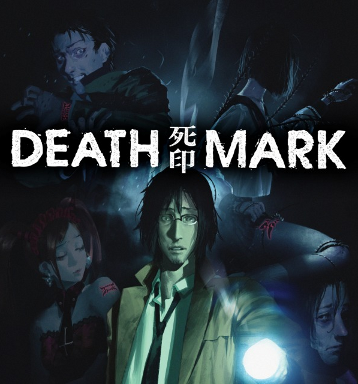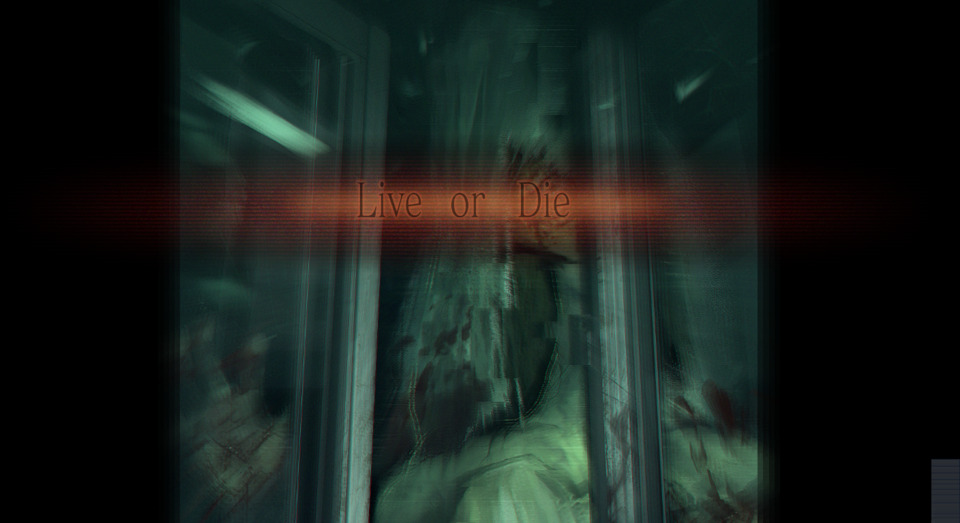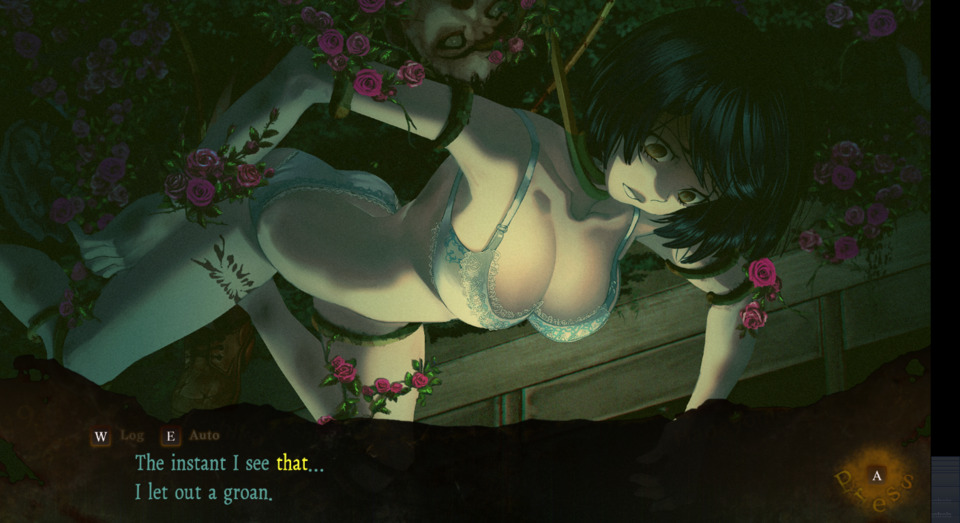VN-ese Waltz: December - Spirit Hunter: Death Mark
By Mento 2 Comments
Decided to spend the second half of 2021 checking out some renowned visual novels. Sometimes my ideas aren't any more elaborate than that. I've tried to discuss the following games in as spoiler-free a manner as possible, with a very spoilerish section at the end for my final thoughts on where the story goes.

Yeah, I dunno what to tell you, but this is the third month in a row where I selected a scary, grisly horror game for the VN-ese Waltz, despite being even further removed from Halloween here in late December. I did temporarily consider a visual novel of a more romantic nature in time for Christmas - from what I understand, the Japanese treat December 25th as a bonus Valentine's Day - but all the touchy-feely ones I have on standby are of western origin. No knocks against the burdening gaikoku visual novel industry, just that my original intent for VN-ese Waltz was to establish a Japanese "base" to better appreciate these foreign interpretations of the format: like starting with the source of something before moving onto the homages. So, I find myself with yet another well-regarded horror VN instead: 2018's Spirit Hunter: Death Mark from Experience, a doujin developer perhaps best known for Wizardry-style dungeon-crawlers like Stranger of Sword City and Demon Gaze.
That said, Spirit Hunter really errs much closer to a standard adventure game rather than what we consider a visual novel. There's plenty of inventory puzzles, for one, and it even has combat of a sort (more on that in a moment). The story concerns an amnesiac man who finds himself in a mansion owned by the Kujou family, a noteworthy clan of psychics: the head, Saya Kujou, is soon discovered dead in one of the rooms, felled by an odd curse that caused flowers to bloom from her torso. The mansion's only other occupant is a polite doll who introduces herself as Mary and a guardian spirit of sorts for the Kujou family. She's aware of your plight - the amnesia is caused by a curse similar to the one that killed Saya, leaving the titular mandible-shaped "death mark" on the protagonist's arm - and recommends working together with other "mark-bearers" to find and exorcise the spirits that created them. The game is broken up into chapters, each pertaining to a different hostile spirit.
As Experience's background is in first-person dungeon-crawlers, it was no surprise to find out Spirit Hunter has a similar format for its exploration. Each chapter has the player and one companion explore haunted locales for a means to defeat the spirit within, moving around a map using directional prompts and gathering items and clues along the way. Occasionally, the player will run into a life-or-death encounter with the target spirit or its minions and must choose between several multiple choice prompts to avoid an early demise. Eventually, once all the pertinent clues have been gathered, the target spirit apparates for a fight. You then have to use items in the right order to either destroy the spirit or peacefully resolve its grudge; either way, the spirit vanishes and the game moves onto the next chapter. What's notable about this system is the importance of the chosen companion: there's usually two or three per chapter, each possessed of separate skillsets. For instance, the fourth chapter has you hunting for a spirit that was formerly a science teacher, and your companions includes the skeptical scientist Madoka Hiroo, famous psychic Tomoko Yasuoka, and music idol Ai Kashiwagi: as the spirit has a weakness to sound, Ai is needed for the final confrontation, but prior to that the protagonist must complete a series of school tests including one written in German, of which of the group only Hiroo is able to read. Along with the correct item usage, the game provides plenty of hints to most if not all of these roadblocks though some trial-and-error might be necessary.
While the game has an interesting premise and structure, I found myself running into all sorts of issues. Most pressing of those of the technical variety was how the extreme spooky vignetting during spirit encounters made the game slow to a crawl on the ol' potato, though since it wasn't an action game it didn't interfere too much. It felt like one puzzle might've been lost in translation somewhere: there's a spirit that will react poorly if you mention eyes or "anything sounding like 'eye'", and during a conversation with it you're prompted to talk about the color of something and will get penalized if you select green or red instead of pink - there's no obvious wrong answers here, since this is the first you've heard of anything color-related, but it's possible it had something to do with the kana or kanji for "eye." It could just as easily have been a missing clue, or was supposed to be a wild guess. As you might imagine, death states can be pretty common if you stubbornly refuse to use a guide. Spirit Hunter's other major issue is with its odd UI: there are limited places to save while playing, basically only while exploring or in the Kujou mansion hub, which means having to complete the 30-minute prologue before you have any UI options. The options menu has a "save and quit" option but it only refers to any changes you made to the options themselves, not the game state. Instead, you have to use the separate save/record prompts on the hub or exploration menu and to quit you have to access your bag, where items and clues are kept, and choose to exit option in the bag menu which is actually the prompt to exit the game. The amount of confusion this generates is such that there's actually a user-created Steam guide to tell you when and how to save and/or exit the game without just alt-tabbing/ctrl-alt-deleting and shutting down the process. I can only assume it's more straightforward for the console versions.

Spirit Hunter does possess a strong command of atmosphere, vital for its thematic genre but also something that tends to come easily to the first-person dungeon-crawlers upon which the game's adventure mechanics are loosely based. The genre got its start with precursors like 1982's 3D Monster Maze and 1987's Dungeon Master, both renowned for using sound design and monster AI to heighten the tension as you explore a dungeon inhabited by hostile creatures in real-time. Likewise, Spirit Hunter will toss in the occasional jumpscare - the player explores areas closely with a flashlight reticle, and it'll pass over eerie sights that'll suddenly vanish with a noise - but does its best work by building suspense, making areas feel more dangerous the longer you stay there. The ghosts are kind enough to not actually attack until a specific point in your investigations when you have everything you need to defeat them, but as soon as you hit that trigger - which you'd have no way of anticipating the first time through - you're suddenly thrown into the thick of things and forced to think on your feet.
One unfortunate choice the game makes, possibly owing to the nature of Japan's doujin scene, is a certain degree of unnecessary lewdness: several female characters are found in compromising positions during a ghost attack, only narrowly avoiding the need for the usual genital censors that Japanese games require, and it's absurdly gratuitous every time it happens. For example, a perky highschooler ingénue gets abducted midway through the first chapter and is later found strung up by thorny vines in her underwear: there's no indication that the spirit is a pervert (it's actually the ghost of a grade-schooler) and so there's no narrative excuse for this sudden cheesecake. It's not enough to be a dealbreaker by any stretch - though I might suggest Jason not play the game on UPF any time soon, just in case - but a manifestation of the male gaze that feels entirely out of place, often undermining the game's more serious horror atmosphere. I'm just grateful that at least the stoic protagonist doesn't turn into a Tex Avery wolf whenever it happens.

On the whole, though, Spirit Hunter earns points for its distinctive structure, a decent enough localization, its dread-inducing horror atmosphere, and an episodic format that allows for both intermittent and marathon play sessions dependent on the player's preference. I suspect most of these UI issues are buffed out for its sequel, Spirit Hunter: NG, which I managed to snag in the same bundle and might reserve for a future visual novel-based foray in 2022 or beyond. It's also yet another example of a VN created by RPG developers: a phenomenon that isn't as rare as I'd previously thought. I'd be curious to see a few other RPG developers give it a shot too; what the heck would a Falcom VN look like? Given the talented writers behind the Trails franchise, I wouldn't put it past them to make something worthwhile.
All that's left is to provide the usual spoiler-blocked discussion of the ending and to thank anyone for following these adventures of a VN neophyte. I hope to incorporate many more in my Indie Game of the Week feature, if not necessarily in another standalone feature like this. (Though I did already pick out a name, VN-ese Whirl, just in case.)
